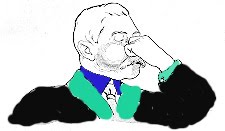Tests of eustachean tube function
Functions of eustachean tube are:
1. Ventilation of middle ear
2. Drainage of middle ear secretions
3. Protection of middle ear from nasopharyngeal commensals and pathogens
For any middle ear surgical procedure to succeed a normal and functioning eustachean tube is a must. It is always better to have a clear understanding of the functional status of ET before embarking on tympanoplasty / myringoplasty.
Tests of eustachean tube function:
Pneumatic otoscopy:
A normal appearing ear drum in otoscopy portends a normal eustachean tube function. A retracted ear drum indicates a blocked eustachean tube.
Fluid level seen behind the ear drum indicates secretory otitis media.
A normally moving ear drum on penumatic otoscopy indicates normal eustachean tube function.
Valsalva maneuver:
This maneuver is not popular now. It was first proposed by Antonio Maria Valsalva during 17th century. This maneuver is performed by exhaling forcibly exhaling against a closed airway. This is a very difficult maneuver to perform. To overcome this difficulty a modified valsalva Maneuver has been proposed. In this maneuver, the patient is made to expire against closed glottis.
Toyenbee maneuver: This maneuver is again used to subjectively / objectively test eustachean tube function. The patient
is instructed to swallow while pinching both the nostrils. A normally functioning eustachean tube will cause a popping
sound to occur inside the ear. If otoscopic examination is performed simultaneously the ear drum could be seen moving in and out.
Lowry technique: This is a combination of Valsalva and Toyenbee maneuvers. This technique involves pinching the nose while attempting to blow and swallow at the same time.
Frenzel Maneuver: The patient is asked to pinch the nose closed. The back of the throat is closed (as it happens when one strains to lift a heavy weight). While performing this procedure the patient attempts to vocalize the letter "k". This forces the tongue backwards causing air to be pumped into the eustachean tube.
Yawning Maneuver: Attempting to open the mouth wide as if one is yawning will open the eustachean tube if it is patent.
Tympanometry:
This test is used to objectively assess eustachean tube function. Measurement of impedence of middle ear by this procedure will help to assess its function. A normal middle ear pressure is associated with normal eustachean tube function, while a negative middle ear pressure indicates a blocked eustachean tube.
Imaging:
CT scan / MRI scan of temporal bone will also help in assessing eustachean tube function.
Sonotubometry:
Sonotubometry is also known as acoustic tube endoscopy. This method of investigation tests the patency of eustachean tube by its ability to conduct sounds from the nasal cavity. A small speaker is placed over the nasal cavity. This speaker is used to generate sounds at the level of nasal cavity. This sound if the eustachean tube is patent gets conducted to the middle ear cavity.
A microphone placed at the level of external canal picks up the sound. Eustachean tube function is one of the difficult functions to test clinically, leave alone objectively.
Eustachean tube block is one of the commonest postulated cause for middle ear inflammatory pathologies. Sonotubometry offers a very easy and versatile way of objectively assessing the function of eustachean tube. This test is also known as acoustic tube endoscopy. Sound usually 8 kHz is generated by a speaker which is placed close to the nasal cavity. This sound will reach the middle ear via the eustachean tube if it is patent. This sound can easily be recorded by placing a microphone in the external auditory canal.
Four common curves of sonotubometry have been identified by recording sound transmitted at the level of external auditory canal:
1. Spike type (the most common type 60%)
2. Double peak type (17%)
3. Plateau type (17%)
4. Descendant curve (5%)
In patients with perforated ear drum the function of ET could be assessed by instilling ear drops into the affected ear. If the ET is patent the patient will be able to sense the bitter taste of ear drops in the throat.
